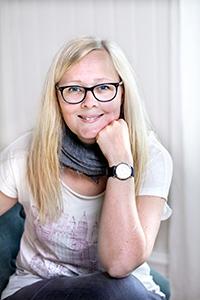Digital tool for climate friendly holidays
More people are worried about how their travels affect the climate. Mistra Urban Futures has been involved in developing a digital tool that makes it easier to make climate friendly decisions before booking your next trip.
Global warming is a critical issue. In order to reduce greenhouse gas emissions, major societal changes are being discussed. As individuals, we also need to change our everyday behaviour. Climate anxiety has become a concept that a lot of people relate to and how we travel, both for holidays and work, is in focus.
Klimatsmartsemester.se (now also available as travelandclimate.org) is a digital tool which was launched in the summer of 2018. It shows the effect a specific journey has on the climate. The user enters information about where the journey starts and ends, as well as the means of transport and accommodation, and then gets the journey's total climate emissions. The idea was born in a network for exchange of knowledge about climate friendly travel. The network is connected to Mistra Urban Futures and consists of representatives from Chalmers, the University of Gothenburg, the City of Gothenburg, Region Västra Götaland and actors from the hospitality industry.

“When we looked at how the habits of people living in Gothenburg, Sweden, affect the climate, we saw that the emissions from flying equals their emissions from driving. There are plenty of initiatives to reduce car traffic but none when it comes to long-distance air travel”, says Chalmers researcher Jörgen Larsson who studies greenhouse gas emissions from aviation.
A credible method
Jörgen has played a central role in the development of klimatsmartsemester.se. He has been responsible for the method which calculates and compares the emissions for different trips and different modes of transport. To be able to make climate friendly decisions, reliable information is necessary, and for individuals it can be difficult to navigate when the information comes from the train or airline companies. The method behind the tool was initially questioned by operators in the aviation industry who felt that the calculations disadvantaged them. But Jörgen emphasizes that it is the independent position as a researcher who creates legitimacy and makes klimatsmartsemester.se credible.
“We have produced figures that are fair. It is based on scientific analyses developed by us behind the tool and by other researchers. It is a strength that we use the same calculation model for both transport and the accommodation”.

The users of the tool can easily find information about how the calculations are made. Anneli Kamb,
research engineer at Chalmers, helped to compile data and make the calculations behind the calculator. She emphasizes the importance of transparency.
“Today’s debate is polarised, and different actors use different calculation methods, which can make it difficult to communicate. Therefore, it is extremely important for us to be transparent with our method. Travelling is an important question that affects many people, so the figures must be credible, says Anneli”.
The access to data, as well as quality and variety, have varied. According to Anneli, finding figures for hotel accommodation abroad was a challenge. But she sees great benefits with the tool. For most people, it is difficult to grasp what 300 kilograms of climate emissions mean, but the tool creates a context and compares with other trips and to everyday life in a household. In addition, the consequences are clarified by pointing out how the trips lead to a certain amount of polar ice melting.
”In the end, we hope that the total climate impact from the Swedish holiday travel will decrease. With klimatsmartsemester.se you can compare alternatives, get inspiration and holiday tips which are geographically closer and are more climate friendly”, Anneli says.
A tool that breaks norms
Within the network behind klimatsmartsemester.se there are actors with different purposes and driving forces. In addition to contributing to the funding, Mistra Urban Futures has played an important role according to Jörgen.
“This is a good example of a project within Mistra Urban Futures”, he says. “The centre creates collaborations between researchers and practitioners in a context where one has identified a need for knowledge and helped to fill that void”.
What impact has the tool had? Since its launch in the summer of 2018, it has had 50,000 users and gained a lot of media exposure. About 40 large media outlets have reported about klimatsmartsemester.se, for example Dagens Nyheter which regularly links to it in its travel features online. The tool has also recently been launched in English, travelandclimate.org and it is part of the routines of several organisations that work with the tourist industry. For example, the Tourist Board of West Sweden, which is also part of the said network, uses the tool on its website vastsverige.com and refers both business and private travellers to the site.

According to Marie Linde, Vice President of the Tourist Board of West Sweden, the link to the site has been sent to all participants in a large international conference that was held in Gothenburg, Sweden in September 2019 gathering 750 participants. The same has been done through a network of exercise races that have joined under the title West Sweden Action Weeks. There the information reaches, among other things, athletes who travel to participate in Öloppet (Island Race), the world's largest swim-run competition, and Alliansloppet Rullskidor (Alliance Race), which is the world’s largest rollerski race.
“Participants have the opportunity to check out various options to get to Gothenburg. In the context where we know that many people will travel to West Sweden, we highlight the calculator in a simple and clear way”, she says and explains that the tool shows a clear picture of the climate footprint for transport and travel.
“This means that you don’t have to make guesses when comparing different travel options. Perhaps more people choose to spend their vacation a little bit closer to home”, says Marie.
Jörgen Larsson explains that this type of climate information can become even more widespread in the future. There are is a bill suggesting it will be mandatory to show the climate footprint of a specific journey when it is marketed for example with TV advertising.
“Such a policy instrument that is legislated requires calculation models which are widely accepted, and we can contribute to that. The information from the tool can create norm changes in the public and make it more common to spend vacations in climate friendly ways.
Short facts
About: The network for climate friendly vacationing is connected to the Centre for Tourism at the University of Gothenburg and Mistra Urban Futures. The network is a part of the project Guiding Urban Transitions for Sustainability (GUTS).
Started: 2017
Partners: Region Västra Götaland via Klimat 2030 (Climate 2030), Centre for Tourism at the University of Gothenburg, Chalmers University of Technology, City of Gothenburg, Tourist Board of West Sweden, Göteborg & Co, Mistra Sustainable Consumption and Mistra Urban Futures.